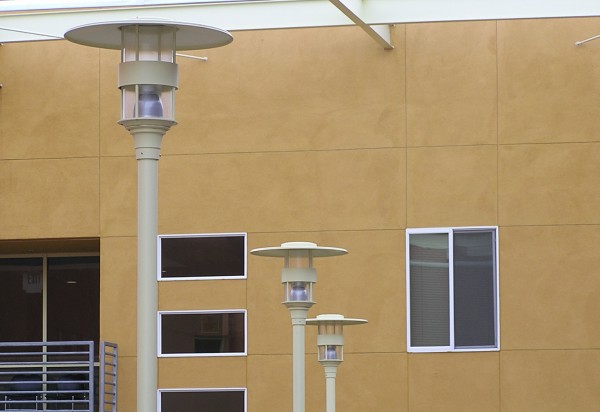Safety and Savings with LED Lighting on Campus

A Leader in Outdoor LED Lighting Projects Sheds Light on the Subject

Imagine if a campus safety improvement did not cut into a school’s funds, but added more money to the budget. Installation of LED lighted bollards, street, path, and quad lighting does just that, as colleges and universities are discovering.
In many schools, the switch to LED lighting began indoors years ago, largely motivated by the substantial return on investment. Back in 2008, Boston College, noting that 60 percent of its energy costs were on electricity, embarked on program to increase the energy efficiency of lighting in its dorms, education halls, libraries, and parking garages, using a mix of LEDs and compact fluorescents. Having realized an annual savings of 5,8 million kWh and 2,700 metric tons of CO2, the school has now begun to refit its outdoor building lighting and pole lighting with LEDs. BU’s Office of Sustainability notes, “The project has resulted in synergy between environmental awareness and operational efficiency.”
But the advantages of LED outdoor lighting do not end with savings of energy and money. The improvement in quality of illumination is actually startling. Before-and-after images reveal an altered night landscape that is brighter overall, with diminished shadows. A street or square that previously offered any number of dark nooks and unseen spaces becomes reassuringly visible. With fewer concealment options for a potential attacker, there is better safety for the night walker coming back late from the library. CCTV systems, if the school has them, get a better view as well.
One reason for the improved visibility with LEDs is that the fuller visible-light spectrum emitted by LED lights, compared to traditional lamp types, makes a better match for the wavelengths perceived by the human eye. The assembly of diodes within LED lighting emits lots of light in the most useful range, close to the human spectrum sensitivity peak at 600 nanometers. LEDs have a very high index of luminous efficacy, measured in lumens per watt; they do not waste their energy putting out light we can’t see, notably infrared (heat). Another reason LEDs offer superior illumination is that they emit light hemispherically rather than spherically, providing greater application where it is wanted, with less stray light (which also means less light pollution).
Campus safety officials are probably also impressed by the low failure rate of LED lamps. With a life of 20,000 to 100,000 hours, LEDs last two to ten times as long as sodium, mercury, fluorescent, metal halide, and halogen lamps. They are also less fragile than most other lamps, enduring bumps, shocks, and high or low ambient temperatures. Their toughness makes for fewer outages, another safety advantage.
Contact our California and Nevada LED Lighting Team Today
We can discuss ways to bring quality, safety, and savings to your college campus. Give us a call today at (925) 240-1566 (California office) or (775) 333-0900 (Nevada office) to learn more about the energy and budget-saving options for your campus. You can also use our online contact form, and a Great Basin Lighting team member will contact you shortly.

